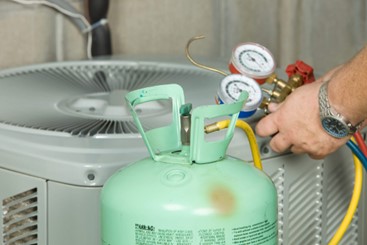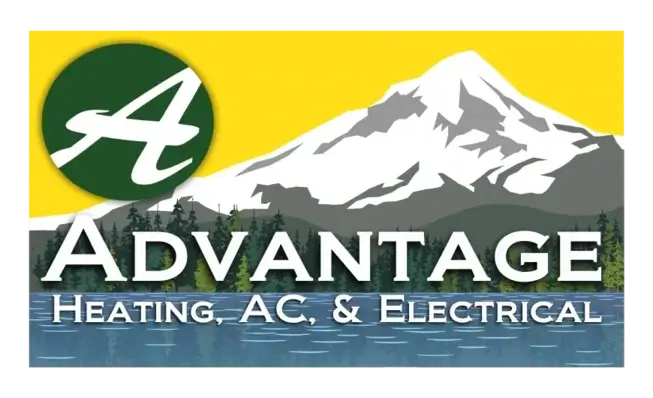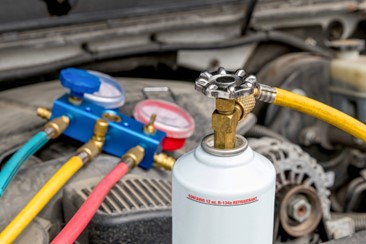
The HVAC industry has undergone significant changes over the years, especially regarding the types of refrigerants used in air conditioning systems. These changes have been largely driven by the desire to reduce ozone depletion and global warming. A major shift starting in 2025 will affect all homeowners with air conditioners and heat pumps. Here’s what you need to know about the new refrigerant requirements and how they will impact you in the coming year.
A History of Refrigerants and the Need for Change
Refrigerants have evolved several times since air conditioning was invented. The earliest refrigerants were called chlorofluorocarbons (CFCs). Developed nearly a century ago, CFCs like R-12 were used for decades in everything from home air conditioners and car ACs to industrial chillers and nuclear factories. Eventually, CFCs were phased out due to their damaging effects on the ozone layer.
Manufacturers introduced hydrochlorofluorocarbons (HCFCs) like R-22 as a replacement. HCFCs are better than previous refrigerants, but they contain chlorine and have a high global warming potential (GWP). Recognizing this, the Environmental Protection Agency (EPA) banned the manufacture of new R-22 air conditioners in 2010, with a gradual phase-out of all R-22 refrigerant products culminating in a complete ban in 2020.
The replacements for R-22 were hydrofluorocarbons (HFCs) like R-410A. With no chlorine in the mix, HFCs have no ozone-depleting properties and are better for the environment. However, R-410A refrigerant still has a high GWP. That’s why the EPA has mandated that beginning January 1, 2025, new HVAC systems must use refrigerants with a much lower GWP, such as R-454B and R-32.
The 2025 Refrigerant Mandate
The new refrigerant requirements in 2025 are part of the broader American Innovation and Manufacturing (AIM) Act, which seeks to phase down the use of HFCs across various industries. For residential HVAC systems, this means the commonly used R-410A refrigerant, with a GWP of 2,088, will no longer be allowed in new equipment. Instead, manufacturers are transitioning to R-454B and R-32, which have GWPs below 750.
R-454B blends an HFC refrigerant with a hydrofluoroolefin (HFO), making it an HFO/HFC blend. It’s specifically designed as a lower-GWP alternative to R-410A. On the other hand, R-32 is a pure HFC, but its lower GWP makes it a preferred choice for modern HVAC systems.
These new refrigerants are classified as A2L, indicating that they are mildly flammable but significantly better for the environment. A2Ls are less flammable than A3 refrigerants like hydrocarbons, propane, and isobutene. They are also less toxic than B-series refrigerants like ammonia. In fact, despite their mildly flammable designation, A2Ls are the second safest class of refrigerant. And while they’re new for central air conditioning in the US, A2Ls have been used for years in window AC units, packaged terminal air conditioners, and overseas residential and commercial applications.
Positive Impacts of the New Refrigerant Requirements
While transitioning an entire industry to new refrigerants has its challenges, several positive impacts await homeowners:
- Environmental benefits: The shift to lower GWP refrigerants for residential air conditioning will reduce greenhouse gas emissions. This change is a crucial step in combating climate change and protecting the environment for future generations.
- Increased energy efficiency: New HVAC systems that use these refrigerants are more energy-efficient, promoting lower electricity bills. Over time, this helps offset the initial higher costs associated with the new systems.
- Future-proofing your home: Upgrading to a system that meets the 2025 requirements ensures compliance with future regulations and avoids the need for costly retrofits down the road.
Negative Impacts of the New Refrigerant Requirements
The transition also presents some challenges for homeowners:
- Higher costs: New HVAC systems compatible with R-454B and R-32 are expected to cost up to 30% more than current systems. This price increase is due to the added complexity of manufacturing systems that use these new refrigerants.
- Technical challenges: The mildly flammable nature of A2L refrigerants means that new safety standards and installation procedures are required. This could complicate the installation process and increase the need for specialized training among HVAC technicians, raising labor costs.
- Availability and compatibility: As manufacturers phase out R-410A, finding replacement parts or refrigerants for older systems may become more difficult and expensive. Homeowners with older systems might face challenges in maintaining or retrofitting their existing equipment.
How Homeowners Should Prepare
Given the impending changes, it’s essential to take proactive steps to ensure your home remains comfortable and compliant with the new regulations. Here’s what HVAC professionals recommend:
- Assess your system: If your HVAC equipment is over 10 years old, it may be nearing the end of its lifespan. Now is a good time to have it professionally inspected to determine whether you should replace it before the new mandate takes effect.
- Consider early replacement: If you’re thinking about upgrading your HVAC system, doing so before the end of 2024 could save you from the anticipated price increases. On the other hand, early adoption of a new, compliant system in 2025 could provide long-term energy savings.
- Budget for future upgrades: If immediate replacement isn’t feasible, start planning and budgeting for an upgrade in the near future. Consider financing options to make the transition more manageable.
- Stay informed and seek professional advice: As the 2025 mandate approaches, stay up to date about the latest developments in refrigerant technology and HVAC systems. Consult an HVAC professional to help you make the best decisions for your home.
Why Choose Advantage Heating & Air Conditioning?
Whether you’re ready to upgrade your air conditioner or still have questions, Advantage Heating & Air Conditioning is here to help. We have served the Willamette Valley since 1992, offering quality work at a cost-effective price. Turn to us for 24-hour emergency service and a satisfaction guarantee with every job. Our highly trained technicians are ready to answer questions about the 2025 refrigerant requirements, so contact us today to learn more. We would also be happy to offer a clear, upfront AC replacement estimate at your home in Salem, OR, or the surrounding area.








